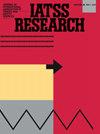Which not-at-fault crashes are unavoidable by using current active safety technology?
Abstract
Previous research has focused on analysing crash reduction potential of active safety technology in at-fault passenger cars, but only a few studies have examined counterparties' possibilities to avoid collisions by using advanced driver assistance systems (ADAS). This study quantified the incidence of fatal not-at-fault passenger car crashes that current ADAS (up to SAE level 2) would be unable to avoid. We used data taken from in-depth investigated fatal crashes in which a passenger car was involved, that car having been first registered during the period 1 January 2010 to 31 December 2017 in Finland. The evaluation of unavoidable crashes consisted of two evaluation rounds. The preliminary evaluation round identified potential active safety systems that could have operated in the studied cases. In the following round, we made a five-level case-by-case analysis including a time headway analysis in order to evaluate the possibilities for crash avoidance. The crash data included 63 fatal crashes, of which five were excluded because the death was due to a sudden illness attack. The remaining 58 crashes were classified as follows: probably unavoidable (n = 51), avoidable (n = 3), and unclear (n = 4). The crash incidence of the unavoidable not-at-fault party crashes was 0.67–0.73 fatal crashes per billion kilometers and 14–15 fatal crashes per million registration years. The results indicate that current active safety systems may be able to prevent not-at-fault party fatal crashes only in a few cases and that the driver's role in road safety remains important despite the deployment of the active safety systems.

 求助内容:
求助内容: 应助结果提醒方式:
应助结果提醒方式:


